There’s lots of chat in the illustration industry about artwork being scraped by AI and us losing out on work to the robots. But what about other (real, human) illustrators - do we need to worry about them too?
I recently took part in a weekend oil painting class “Inspired by Bloomsbury". On day one we copied paintings by Vanessa Bell & Duncan Grant, using their exact palettes and style of painting. Honestly, it was sooooo weird, I know I was learning a new skill and this wasn’t to create commercial work, but I still felt like a big cheat. On day two we took our own source material, our own palette and then created a new painting. This felt a lot better, but I still somehow felt like that artwork wasn't 100% mine.
The whole experience got me thinking about how looking at someone else’s artwork and creating something based on it, is not something I’d ever suggest for a professional illustrator to do if they’re creating art that they will ever promote publicly. Instead it’s good to be aware of the difference between learning / developing, and of copying.
In recent years I’ve seen illustrations done in the style of someone else, where you can clearly see who an artist has taken their inspiration from. There was a really good example of this at Christmas with a British clothing brand who had copied a concept that was really unique to another illustrator. In the end the brand rightly pulled the collection as the artist spoke out publicly, but more often than not people don’t say anything. So if you’re someone who commissions or teaches illustration, or you’re an illustrator who has ever adapted your style to fit a client brief that features someone else’s work, then here are some ideas of how to change your process going forward.
1. DON’T LOOK AT SIMILAR WORK
I recently was asked to illustrate at the National Portrait Gallery, creating 10 minute portraits of guests at an event. They have strict rules which meant I couldn’t use my trusted pens, instead I had to use coloured pencils. There were 4 illustrators who immediately came to mind who do amazing work in this medium….and so I made sure I did NOT look at their work before working on some roughs. Instead I went back to basics, played with the materials for ages, tried different things, made mistakes and eventually reached a place I was happy with. Still in my style, still possible in 10 minutes, something I’d be happy to send to the client. Then after I’d finished I looked at the work of Alex Mein, Connie Lim, Damien Florebert Cuyypers and 'Drawing Dawum’ and thought wow. But I did not try to adapt my style based on great things I saw in their work.
2. ASK THE CLIENT FOR IMAGES OF YOURS THAT THEY LIKE
If I’m sent an image as part of a brief that isn’t similar to my work, then I’ll ask the client to supply one. I don’t mind if there’s say 6 examples of illustrations of women holding a glass of champagne all by different illustrators as a guide, but if there’s only one artist featured I will go back to the client, let them know that artist’s name if I recognise the work, and ask for them to show me something of mine they like (a really good example of why you need a varied portfolio to be able to select from).
I was once asked to do a map, and they came to me with a moodboard which featured only my work. They didn’t like my quote and the work went to someone else. A map might seem a simple thing, but I’m going to show you here some of the roughs of my first map, and where it ended up, as I think this shows how much development there is behind original work. The decisions about where to use capital letters, or how to do trees, how to mix digital and traditional, these decisions take hours to make. Illustrators know when their work has been used as inspiration, and it can be a bitter pill.
3. DON’T FOLLOW ILLUSTRATORS ON ALL SOCIAL MEDIA PLATFORMS
I don’t connect with many illustrators at all on Linked In, instead I connect with people who commission artwork. On Instagram I follow more, but the accounts I seek out more often are textile designers, fine art painters, fashion brands. This way I’m less inspired by new ideas that other illustrators have had and I’m less inclined to follow a trend.
I’m more likely to get inspiration from galleries and vintage shops, photos I take on the street, my collection of old magazines or the way the light falls on a train platform. What really inspires you outside of your phone, how can you make sure it feeds in to your work?
4. MAKE FRIENDS IN THE INDUSTRY WHO YOU CAN TALK TO
I have some great people in the industry who I talk to privately when I’ve got a query. It’s so good to sound something out with someone you trust. One of those, Willa Gebbie, is also an illustrator who works in the same sector as me and we both mainly work with watercolour. But we are just open with each other, “Are you happy if I do this for a client, I realise it might look similar to that thing you did last year?” etc.
and I were recently messaging about copying, and she gave me permission to share the below,
"A lot of people seem to be under the impression that what you find on the internet is there to be copied. A lot of people don't know about copyright laws.
What a lot of people also forget is that the art world isn't that big: if you copy someone, you will be found out. People copy popular artists' style but since style isn't protected by copyright, there's not much you can do about it. I understand that when you're starting out, you copy people that you admire. But there comes a time when you should develop your own style.
On the other hand: I get why people do it. If your style looks like that of another popular artist, that helps selling books and products more easily.
There's a very famous and popular artist from the US who has been copying other (less known) artists for years and they get away with it because they're so well known.
I've had my comics copied so many times. People used my text and my drawings and redrew them in their own style. Often I emailed the person, saying I don't appreciate them making money with something I created. Same with illustrations, I had them copied so many times. You can copy someone else's work as practice but once you publish it (whether it's online or in print), you're infringing someone's copyright. Keep it for your eyes only, if you copy someone.
I used to hand letter quotes from other people (I did credit them), but there came a point where it didn't feel like it was truly mine. I had the skills to make something, but it didn't feel creative or original enough for me anymore because I was standing on someone else's foundation."
5. IF YOU’RE STUCK, SEEK OUT SOME GOOD PEOPLE TO LEARN FROM
Those wise old owls at The Good Ship Illustration are great at empowering people to find their own style. They are friendly and playful and bring masses of commercial experience to the table. As well as paid courses they do lots of free things too. I know that and are also on Substack so do give them a follow.
I’m a fan of The AOI and encourage all illustrators to be members, there are so many great resources there to help with developing a brilliant portfolio.
Also check out who runs a great platform on here called “Art as Work” where you work though creative commercial briefs together and a whole host of other things too.
6. ENJOY YOURSELF!
The best way to feel good about your work is to start from a place where you’re so excited or moved and just HAVE to get marks down on the page. You might not create something immediately that you want to parade around to all. But carry on pushing yourself and it will appear.
Inspiration doesn’t fall from a great height, it’s a skill you hone. Keep working out what really inspires you, and keep it topped up.
Thanks for reading,
Niki
PS. This is written to be helpful. Please by all means share your thoughts and experiences in the comments, but please don’t name any illustrators or brands.





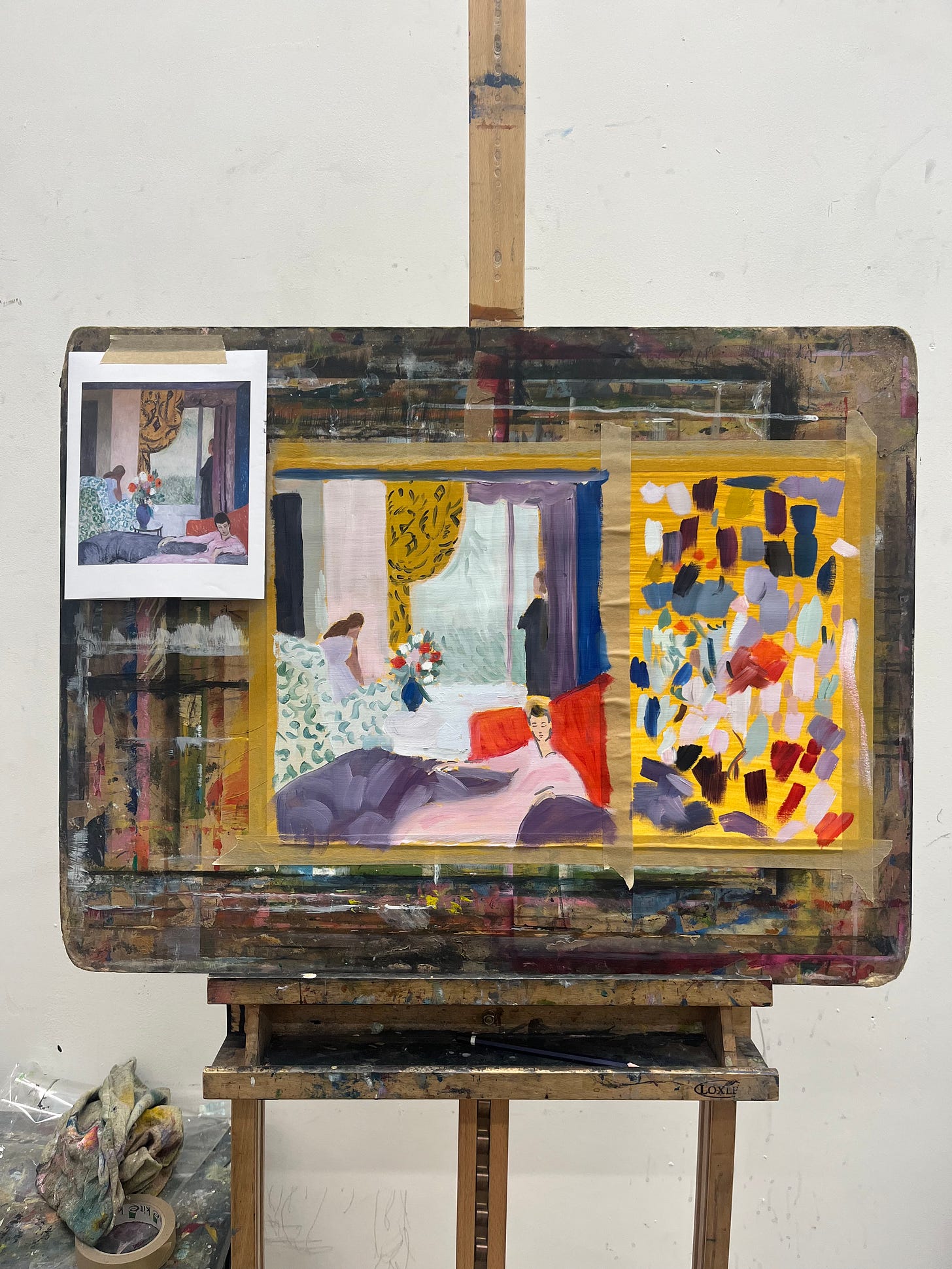
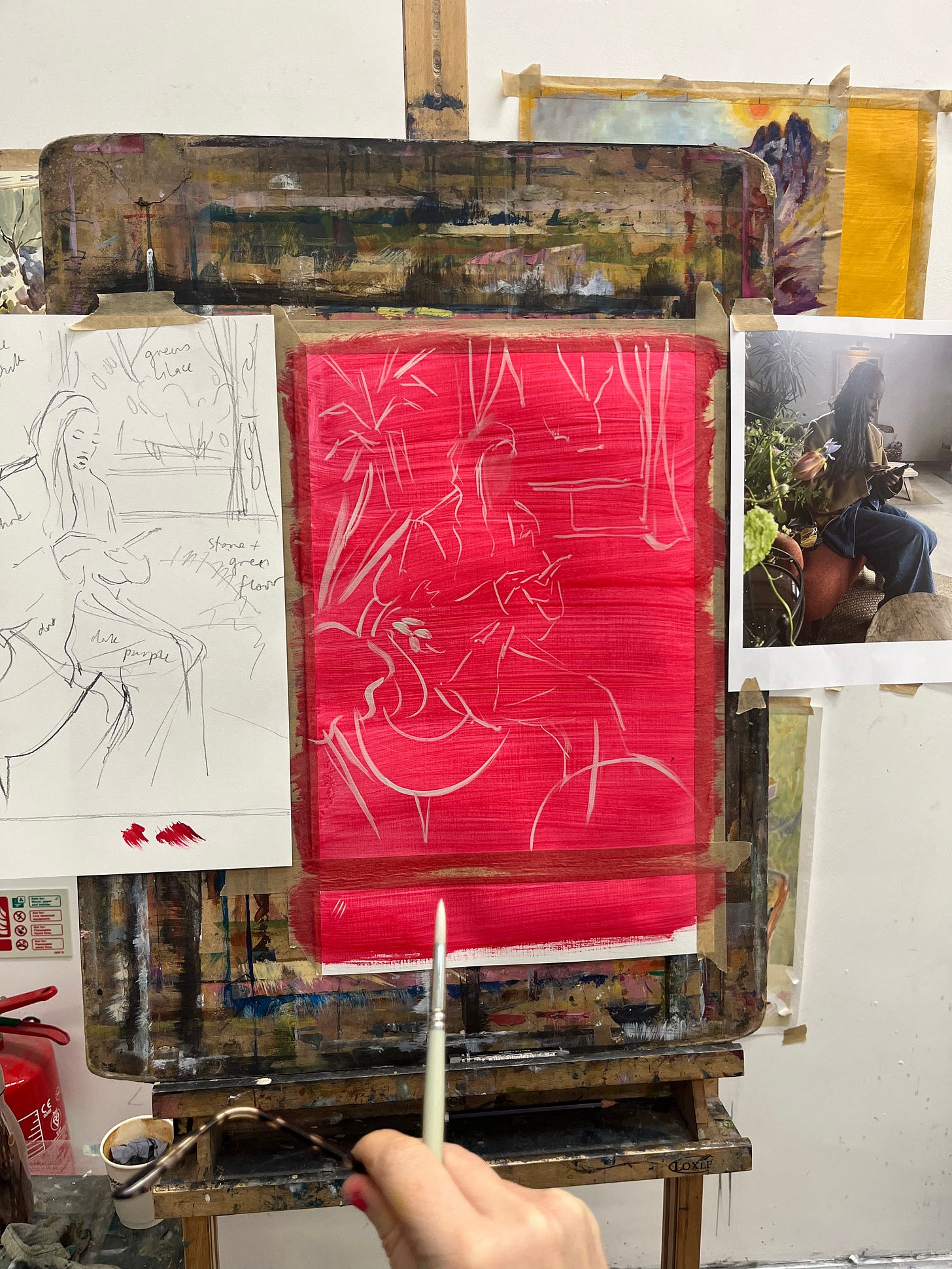
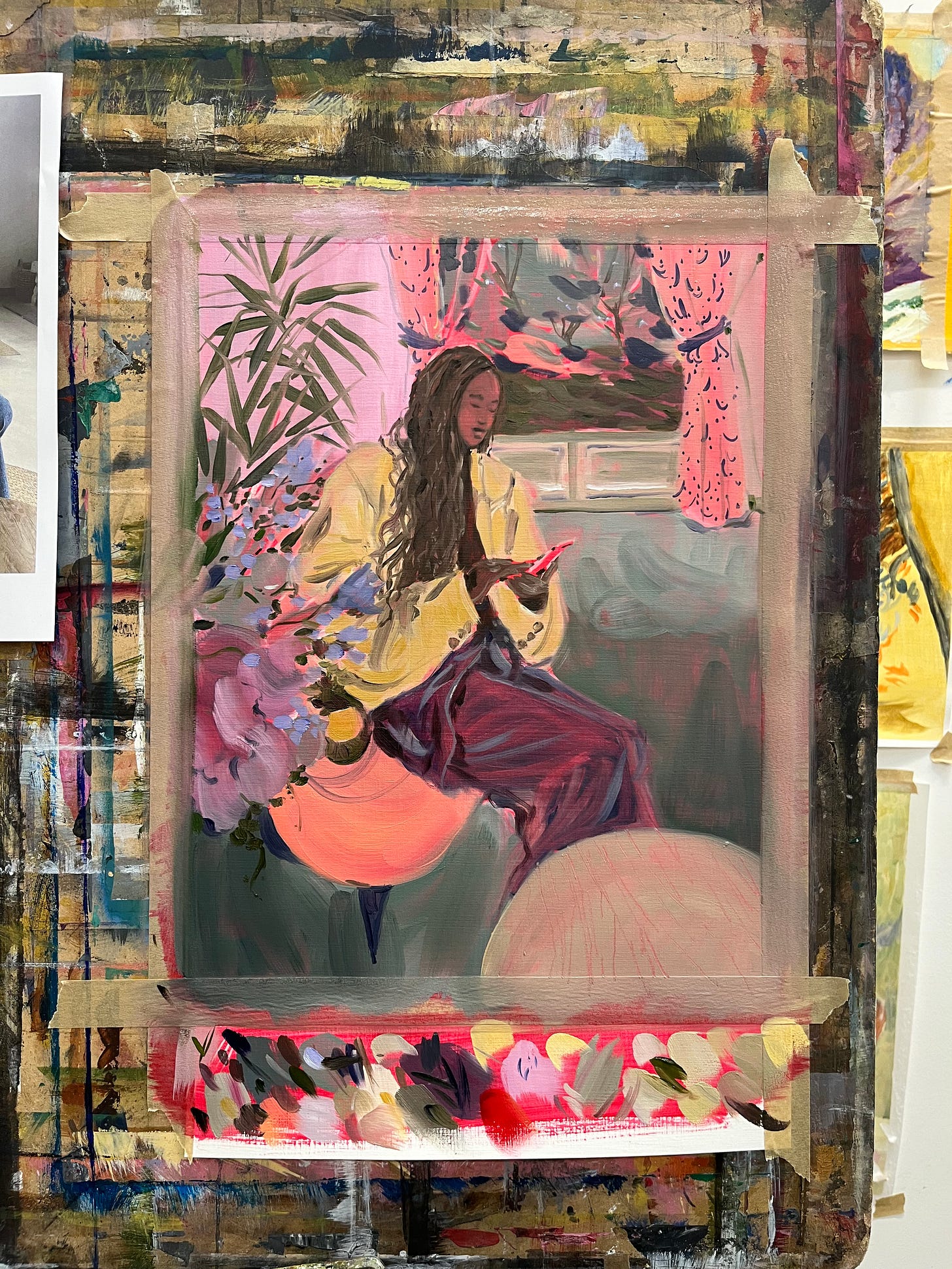
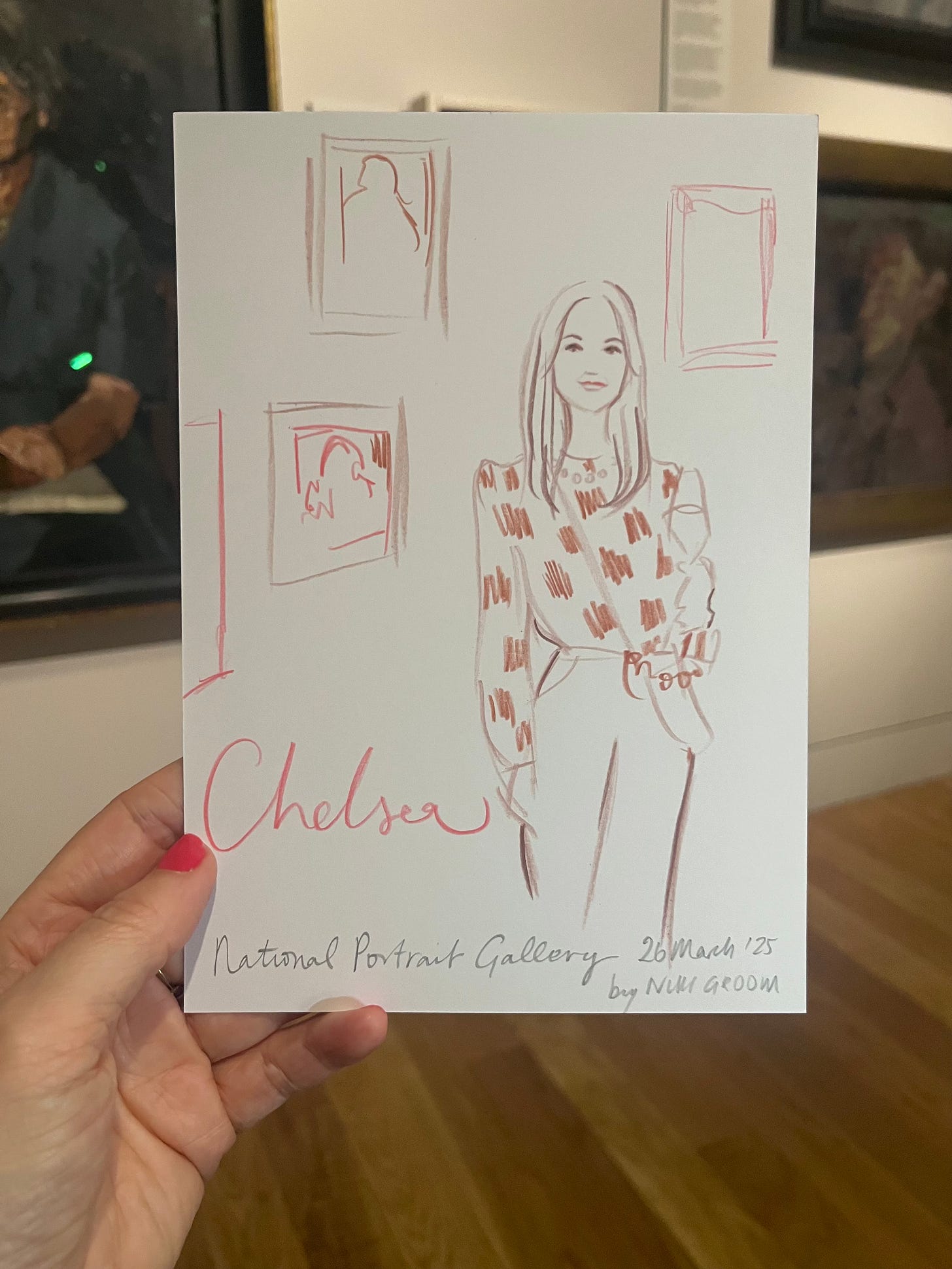
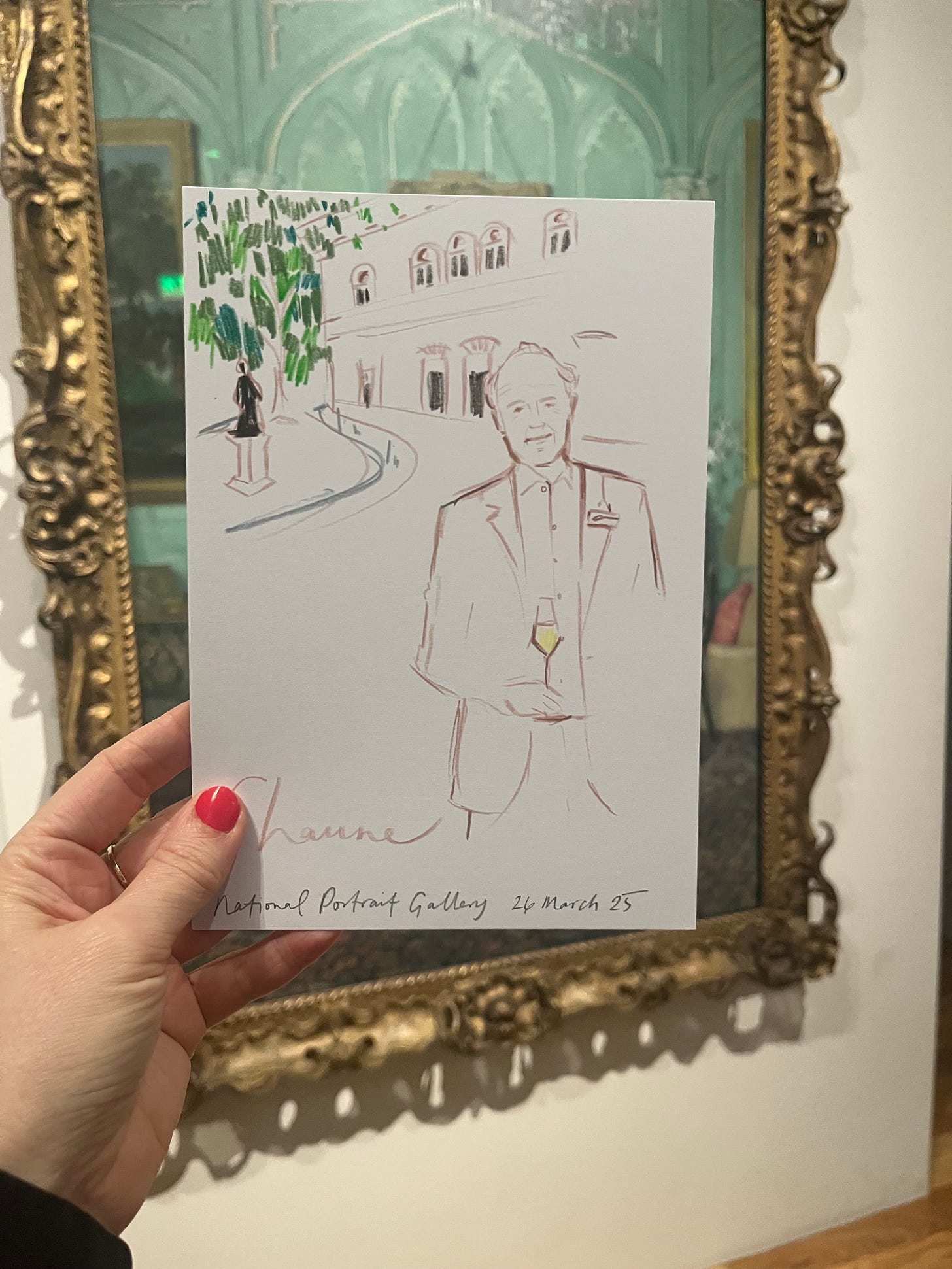
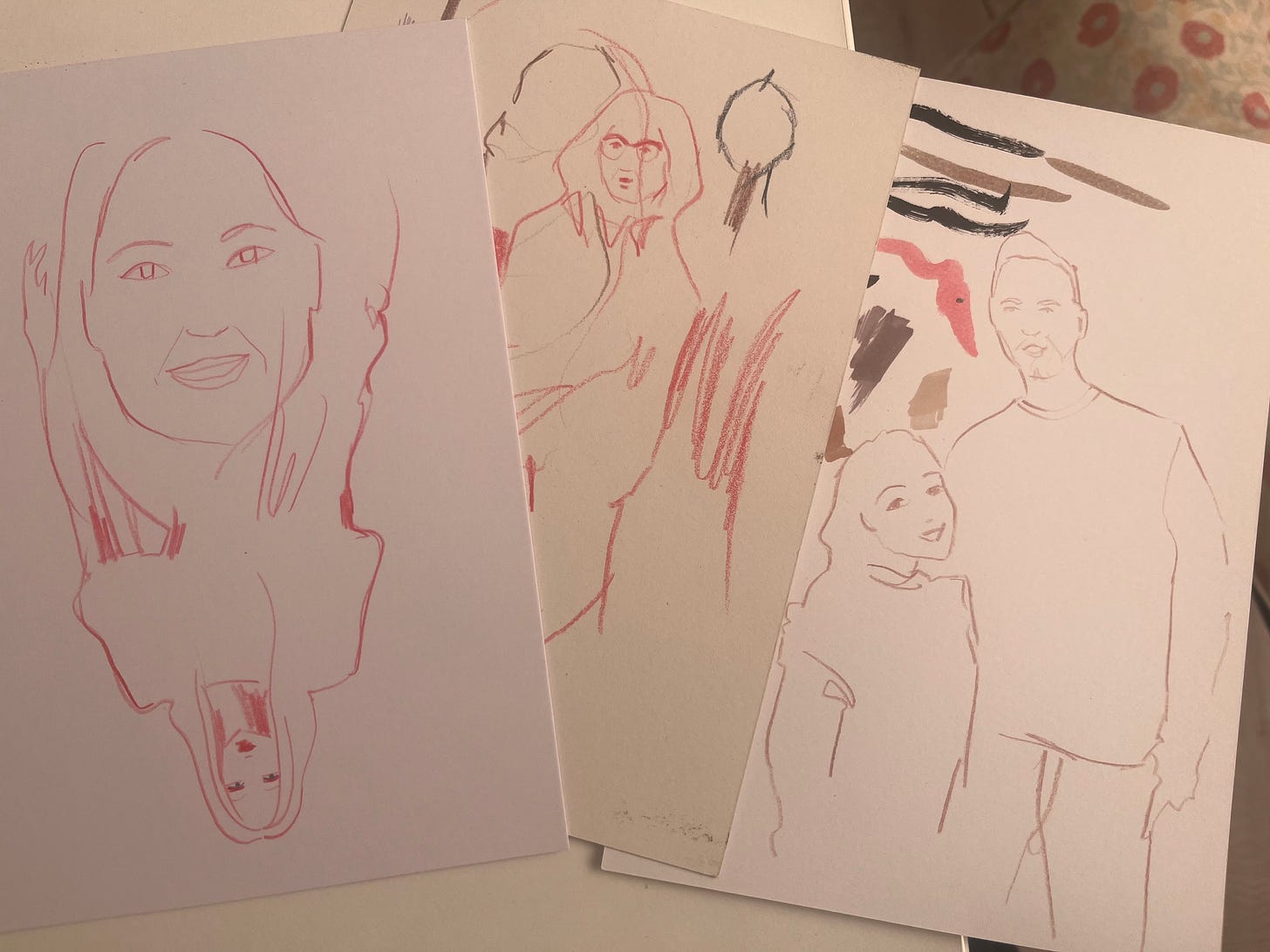
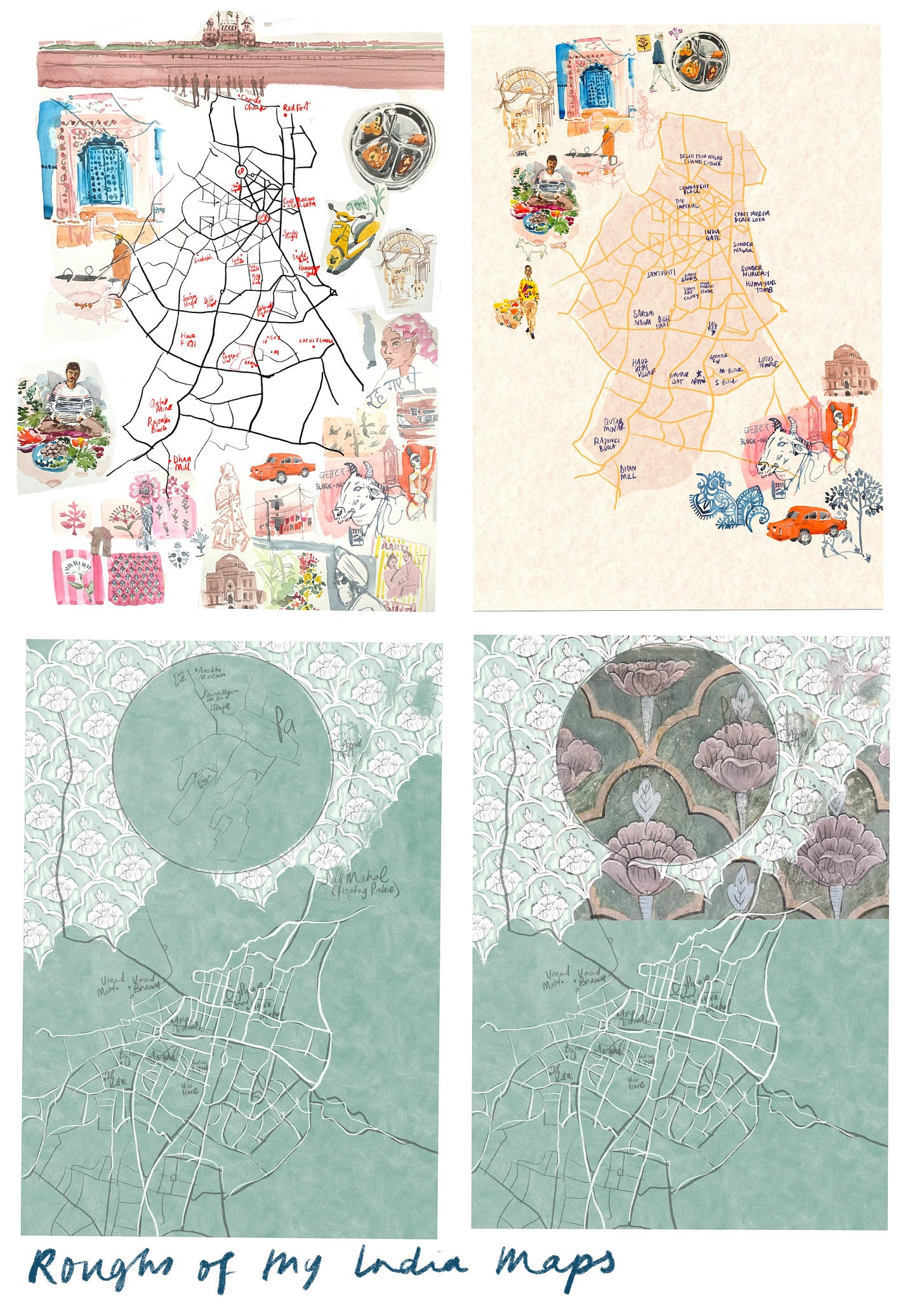
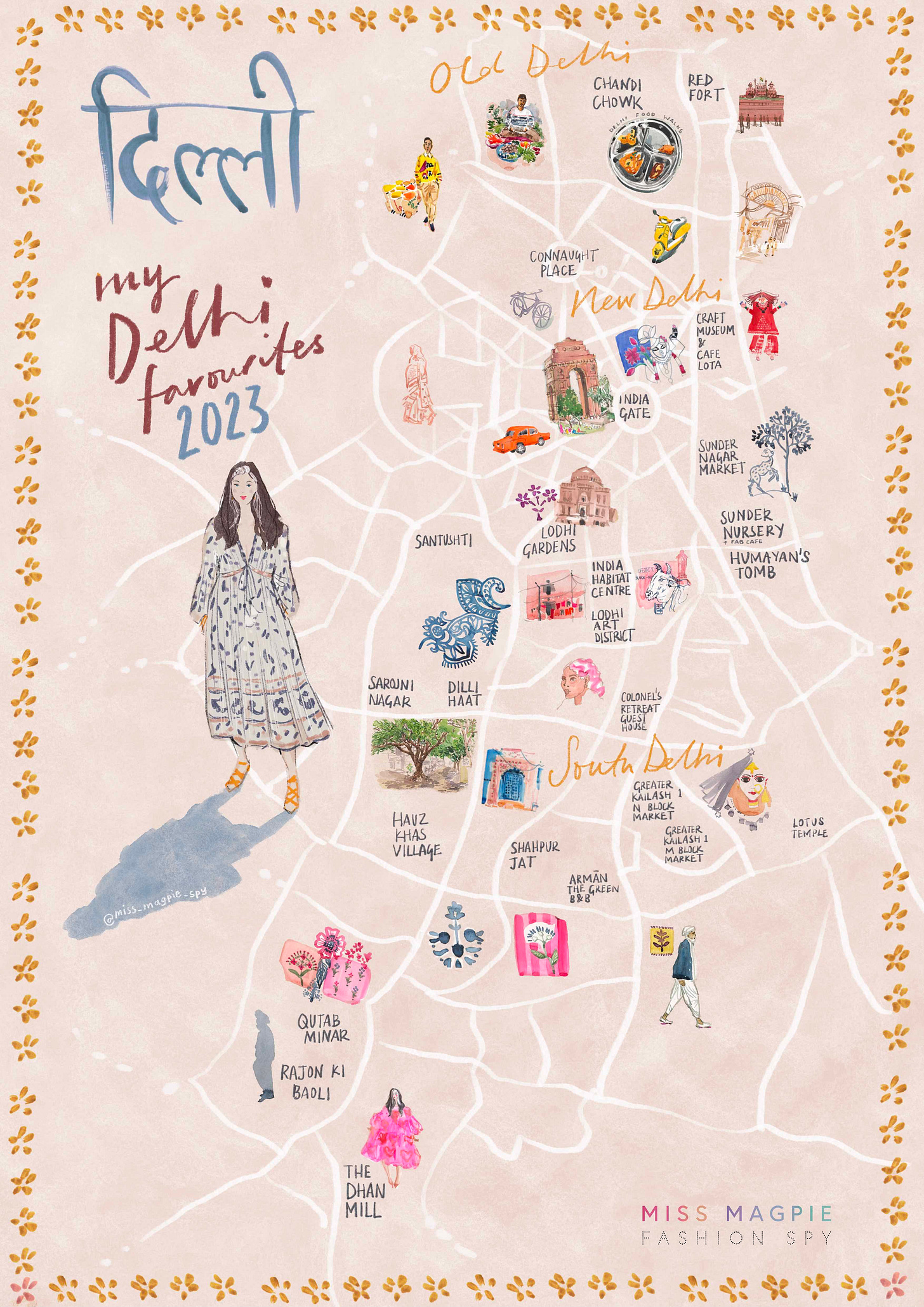
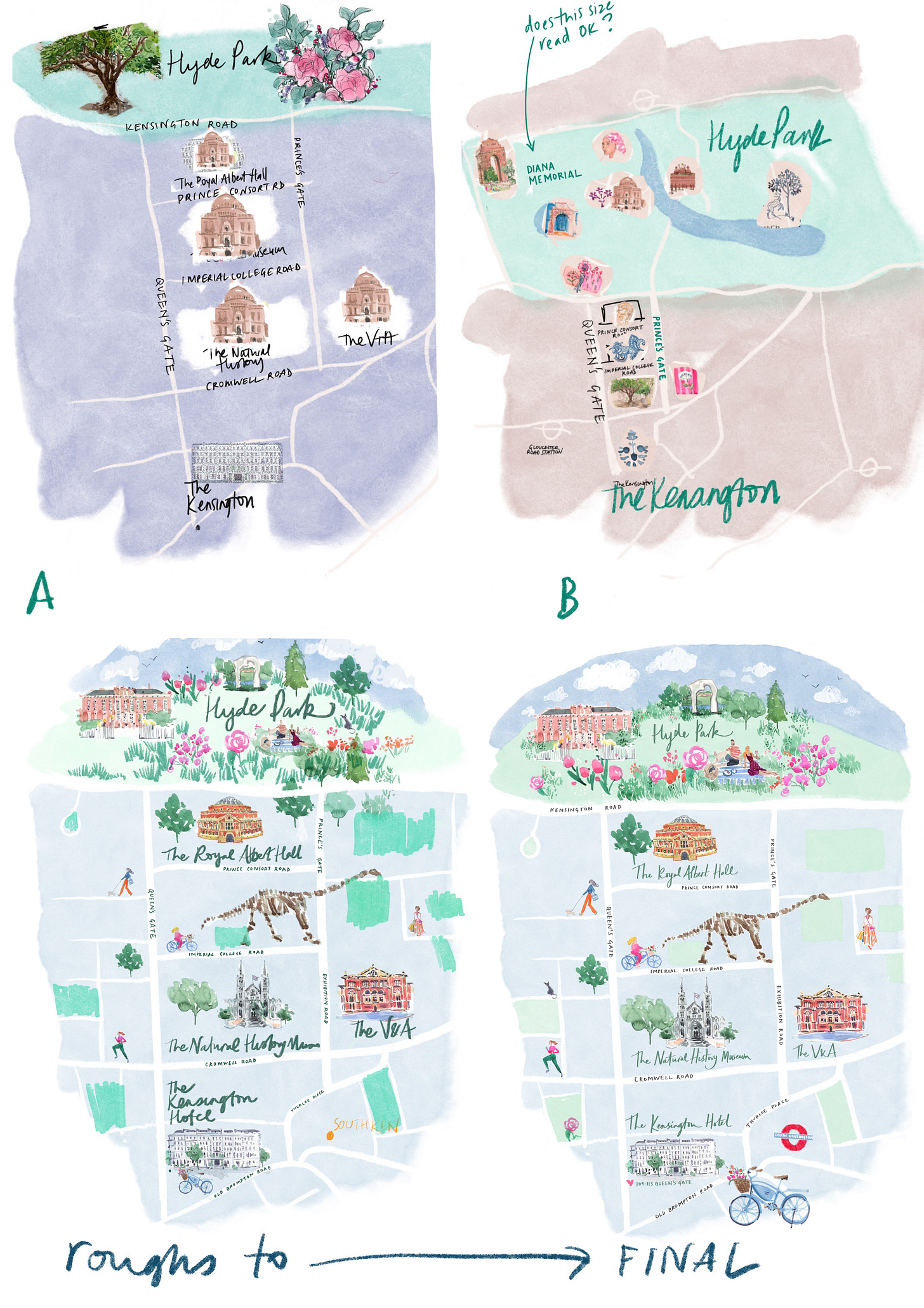
Thanks so much for mentioning me! SO much of what you talk about here is something I also talk about a lot too. In our last 'Round Table' session in my community, the topic was 'Inspiration vs Influence' where I talked about many of the points you touch on, and we very much agree! Especially the point about not following too many illustrators who are adjacent to you, because of the danger of over-influence. In fact, I suggest actively following artists whose work almost feels OPPOSITE to the way you work.
I'd love to comp you a membership, if you're keen? Your experience and opinion on some of what I share in the community would be so valuable. (I like to ask first, as no one wants unsolicited emails! Totally understand if you don't have capacity right now - just drop me a dm!).
Also I am obsessed with Alex Mein's work. He once commented on one of my drawings on IG and it felt like being seen by a rock star!! I went nuts to my husband about it - haha.
Your approaches here are great, especially the way you stripped down your practice to accommodate pencils instead of borrowing someone's else's visual language. Great work!